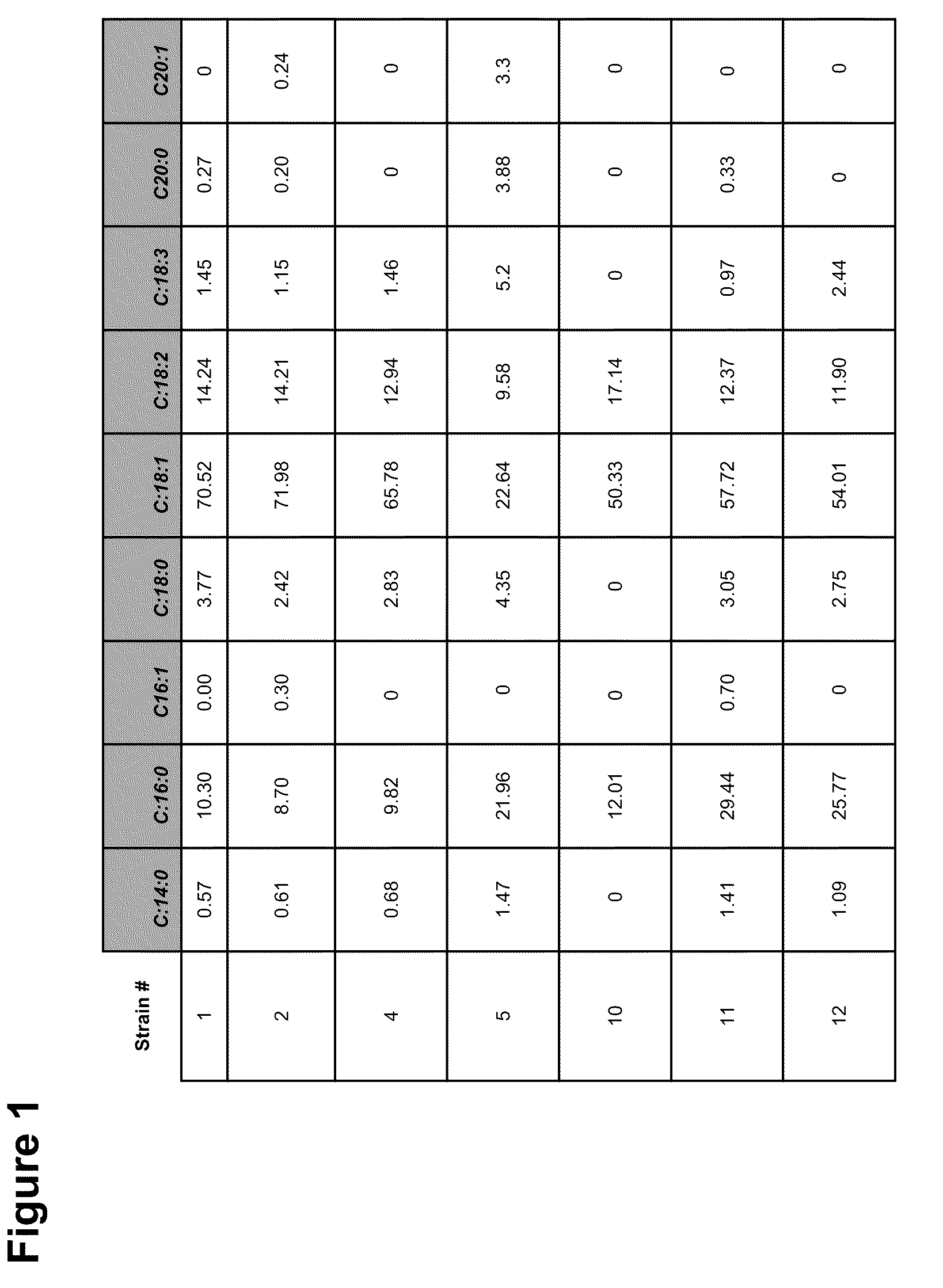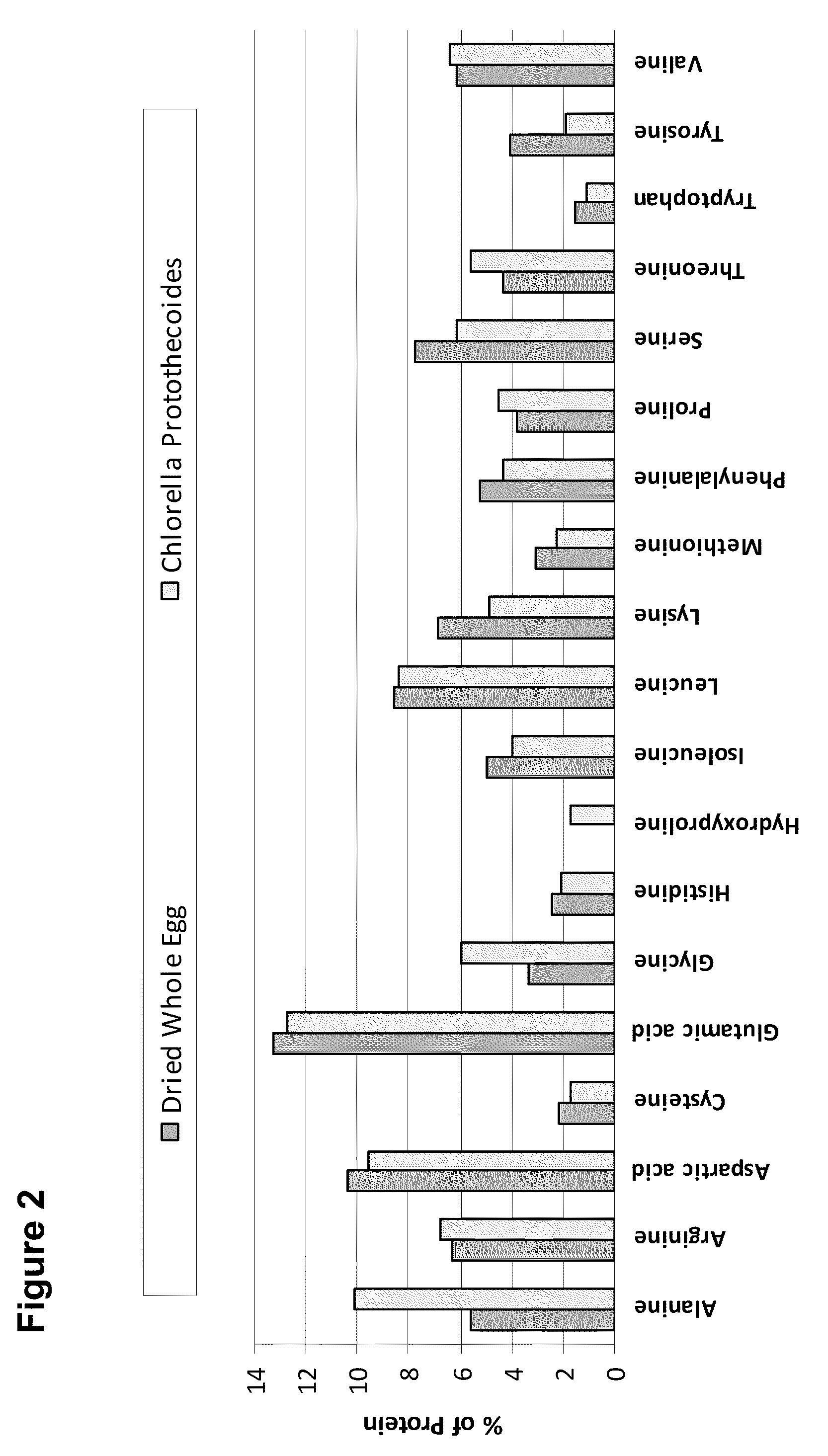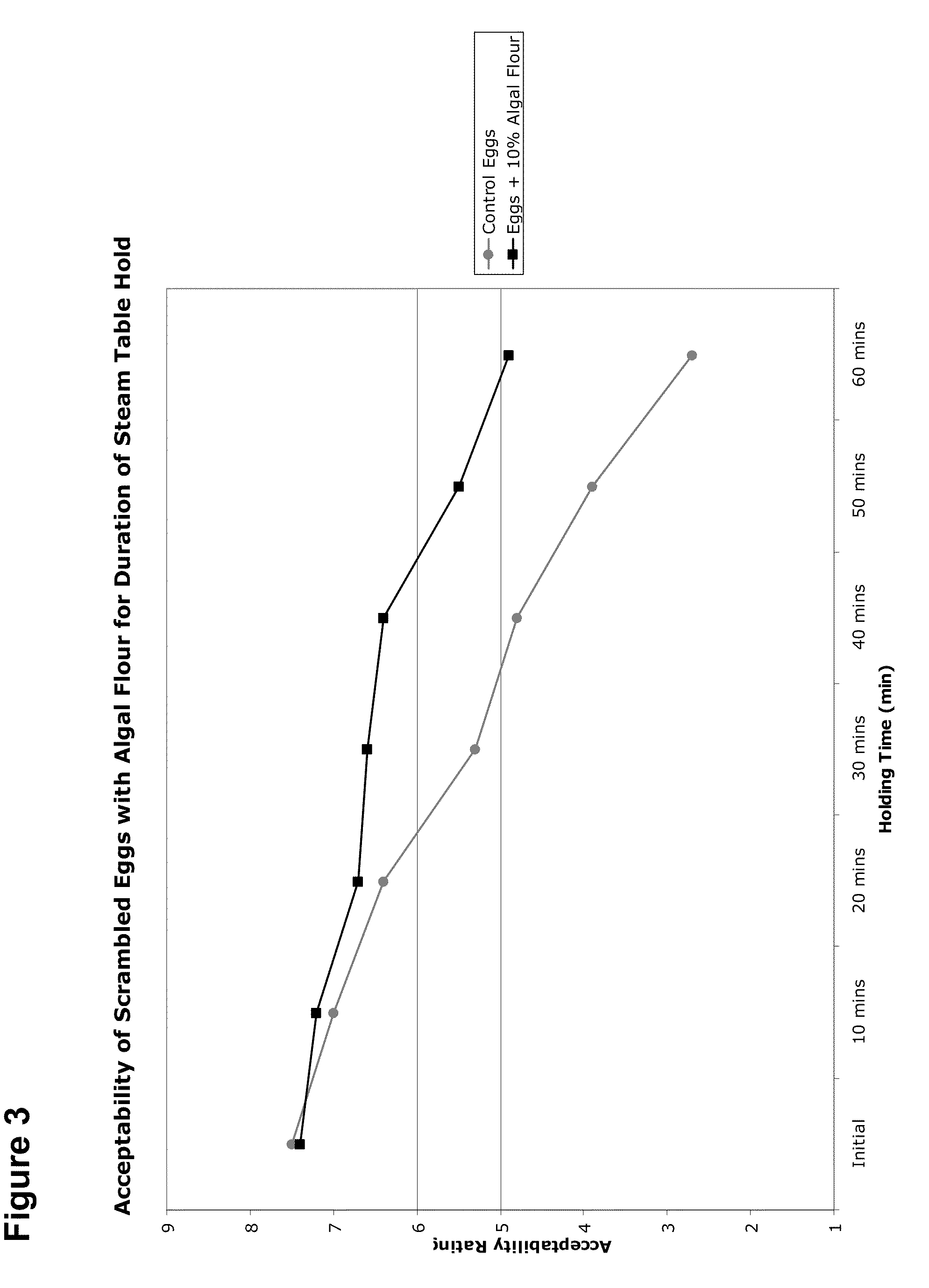Reduced Fat Foods Containing High-Lipid Microalgae with Improved Sensory Properties
a technology of high-lipid microalgae and fat foods, which is applied in the field of microorganisms, food preparation, human and animal nutrition, can solve the problems of not realizing the promise of algae as a foodtuff, weak taste, and deep green color, and achieves similar or identical organoleptic properties, reduced caloric load, and high lipid levels.
- Summary
- Abstract
- Description
- Claims
- Application Information
AI Technical Summary
Benefits of technology
Problems solved by technology
Method used
Image
Examples
example 1
Cultivation of Microalgae to Achieve High Oil Content
[0249]Microalgae strains were cultivated in shake flasks with a goal to achieve over 20% of oil by dry cell weight. The flask media used was as follows: K2HPO4: 4.2 g / L, NaH2PO4: 3.1 g / L, MgSO4.7H2O: 0.24 g / L, Citric Acid monohydrate: 0.25 g / L, CaCl2 2H2O: 0.025 g / L, yeast extract: 2 g / L, and 2% glucose. Cryopreserved cells were thawed at room temperature and 500 ul of cells were added to 4.5 ml of medium and grown for 7 days at 28° C. with agitation (200 rpm) in a 6-well plate. Dry cell weights were determined by centrifuging 1 ml of culture at 14,000 rpm for 5 min in a pre-weighed Eppendorf tube. The culture supernatant was discarded and the resulting cell pellet washed with 1 ml of deionized water. The culture was again centrifuged, the supernatant discarded, and the cell pellets placed at −80° C. until frozen. Samples were then lyophyllized for 24 hrs and dry cell weights calculated. For determination of total lipid in culture...
example 2
[0252]Three fermentation processes were performed with three different media formulations with the goal of generating algal biomass with high oil content. The first formulation (Media 1) was based on medium described in Wu et al. (1994 Science in China, vol. 37, No. 3, pp. 326-335) and consisted of per liter: KH2PO4, 0.7 g; K2HPO4, 0.3 g; MgSO4-7H2O, 0.3 g; FeSO4-7H2O, 3 mg; thiamine hydrochloride, 10 μg; glucose, 20 g; glycine, 0.1 g; H3BO3, 2.9 mg; MnCl2-4H2O, 1.8 mg; ZnSO4-7H2O, 220 μg; CuSO4-5H2O, 80 μg; and NaMoO4-2H2O, 22.9 mg. The second medium (Media 2) was derived from the flask media described in Example 1 and consisted of per liter: K2HPO4, 4.2 g; NaH2PO4, 3.1 g; MgSO4-7H2O, 0.24 g; citric acid monohydrate, 0.25 g; calcium chloride dehydrate, 25 mg; glucose, 20 g; yeast extract, 2 g. The third medium (Media 3) was a hybrid and consisted of per liter: K2HPO4, 4.2 g; NaH2PO4, 3.1 g; MgSO4-7H2O, 0.24 g; citric acid monohydrate, 0.25 g; calcium chloride dehydrate, 25 mg; gluc...
example 4
[0258]Culture of Chlorella protothecoides to generate high oil Algal Flakes
[0259]Chlorella protothecoides (UTEX 250) biomass was produced using 5,000L fermentation tanks using processes described in Examples 2 and 3. Glucose (corn syrup) concentration was between was monitored throughout the run. When the glucose concentration was low, more glucose was added to the fermentation tank. After all nitrogen was consumed, the cells began accumulating lipid. Samples of biomass were taken throughout the run to monitor lipid levels and the run was stopped when the biomass reached the desired lipid content (over 40% lipid by dry cell weight). In this case, the biomass was harvested when it reached approximately 50% lipid by dry cell weight.
[0260]To process the microaglal biomass into algal flakes, the harvested Chlorella protothecoides biomass was separated from the culture medium using centrifugation and dried on a drum dryer using standard methods at approximately 150-170° C. The resulting ...
PUM
 Login to View More
Login to View More Abstract
Description
Claims
Application Information
 Login to View More
Login to View More - R&D
- Intellectual Property
- Life Sciences
- Materials
- Tech Scout
- Unparalleled Data Quality
- Higher Quality Content
- 60% Fewer Hallucinations
Browse by: Latest US Patents, China's latest patents, Technical Efficacy Thesaurus, Application Domain, Technology Topic, Popular Technical Reports.
© 2025 PatSnap. All rights reserved.Legal|Privacy policy|Modern Slavery Act Transparency Statement|Sitemap|About US| Contact US: help@patsnap.com



